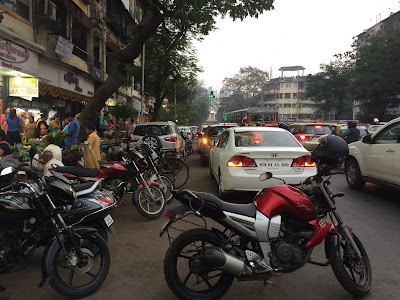Travelling in Mumbai is not as easy as you think. It's a nightmare! Being a world-class city in 21st Century Mumbai still, don't have a
common mobility card like major cities around the globe. We have no idea when it is going to be launch. Just like other projects, integrated ticketing is stuck in government bureaucracy and conflicts. In previous attempts, Mumbai did try to set RFID based smart card first back in 2000 and then in 2007 but because of lack of knowledge and lack of awareness to commuters the smart ticketing system failed miserably. Also, not to forget the lack of technical knowledge, the know-how of the card to authorities.
The public transport in Mumbai consists of bus, monorail, metro, the local commuter train connecting downtown commercial district in the south with suburbs in the north-west and north-east. All of them are operated independently by different government organisation except for Mumbai Metro line 1 (Versova-Andheri-Ghatkopar). Buses are operated by BEST (Brihanmumbai Electric Supply and Transport). Brihanmumbai means Greater Mumbai. Monorail operated MMRDA, Suburban commuter train operated by Western Railway and Central Railway and Metro rail operated by Reliance (Line 1) and Mumbai Metro Rail Corporation Ltd (MMRCL).
Then we have satellite cities of Mumbai (Thane and Navi Mumbai) operating their own buses within Mumbai city limits.
All of them have their own ticketing system which makes commuting in Mumbai the most expensive travel.
The suburban trains are known as the lifeline of Mumbai. It carries a maximum number of commuters than any other mode of public transport. You must have heard the term "Super-Dense Crush Load" this is the nickname given to an entire suburban rail network. This is because of the extensive reach of the train network across the entire Mumbai Metropolitan Region (MMR 6,355 square km). The rail network is the most overcrowded in the world. Tourists are advised not to use trains during morning and evening peak hours. I have myself never travelled on a local train during peak hours.
Western Railways operates train network in western part of the city from Churchgate to Dahanu Road and the railway line between Vasai and Thane on the Central Railway network
Central Railways operates train network in eastern part of Mumbai city limits, Thane, Kalyan-Dombivali all the way to Kasara in the east, Khopoli in the south-east, the harbour line connecting Mumbai to Navi Mumbai all the way to Uran (Uran line will be completed by December 2019) and lastly the trans-harbour link connecting Vashi in Navi Mumbai to Thane. Central Railway also operates harbour line on Western Railway from Goregoan to Kurla.
The major interchange on Suburban rail network are:
Dadar is the major interchange for the commuters on Central Railway and Western Railway.
Kurla is the interchange for the commuters on the harbour line to go to western suburbs
Thane is the interchange for commuters travelling on trans-harbour lin between Vashi and Thane.
 |
| Rail map of Mumbai |
Historically, travel in Mumbai has always been north to south in the morning and south to north in the evening. This is mainly due to Mumbai's geography. East-West travel has always been a nightmare. Even after the opening of new roads Jogeshwari-Vikroli link road (JVLR) and Santacruz-Chembur link road (SCLR). Before the link roads, they were fewer roads to connect eastern suburbs and western suburbs.
Other modes of transport have management issues especially bus are making a continuous loss and are not able to recover operating cost as well. This is purely because of mismanagement issues within the organisation.
The monorail is also into a loss because of improper planning. Hopefully, this will change when the entire line is thrown open to the public by March 2019. Fingers Cross!
Mumbai Metro line 1 is the most expensive metro rail in the world and all thanks to the PPP model (Public-Private Partnership) with Reliance. While other lines of Mumbai Metro are still under construction will be completed by 2020-2023.
 |
| Non-Functioning AVTM |
 |
| RFID Card for Western Railway |
 |
| Functioning AVTM at Andheri Railway Station |
 |
| Santacruz Station Overbridge |
 |
Andheri Railway Station
|
 |
| The indicator on Andheri Suburban Railway Station |
The indicator (above) showing seven trains arriving at Andheri Station.
The format of the indicator is:
Number of rakes, Destination code, ETA, Fast/Slow, Platform Number
 |
| Mumbai Local Train Western Railway |
 |
| Inside Mumbai Local Train |
 |
| Auto Rickshaw in Mumbai |
 |
| Traffic Jam in Mumbai |
 |
| Western Express Highway Mumbai Metro (Line 1) Station |
 |
| Old Rickety BEST bus Interior |

























































































